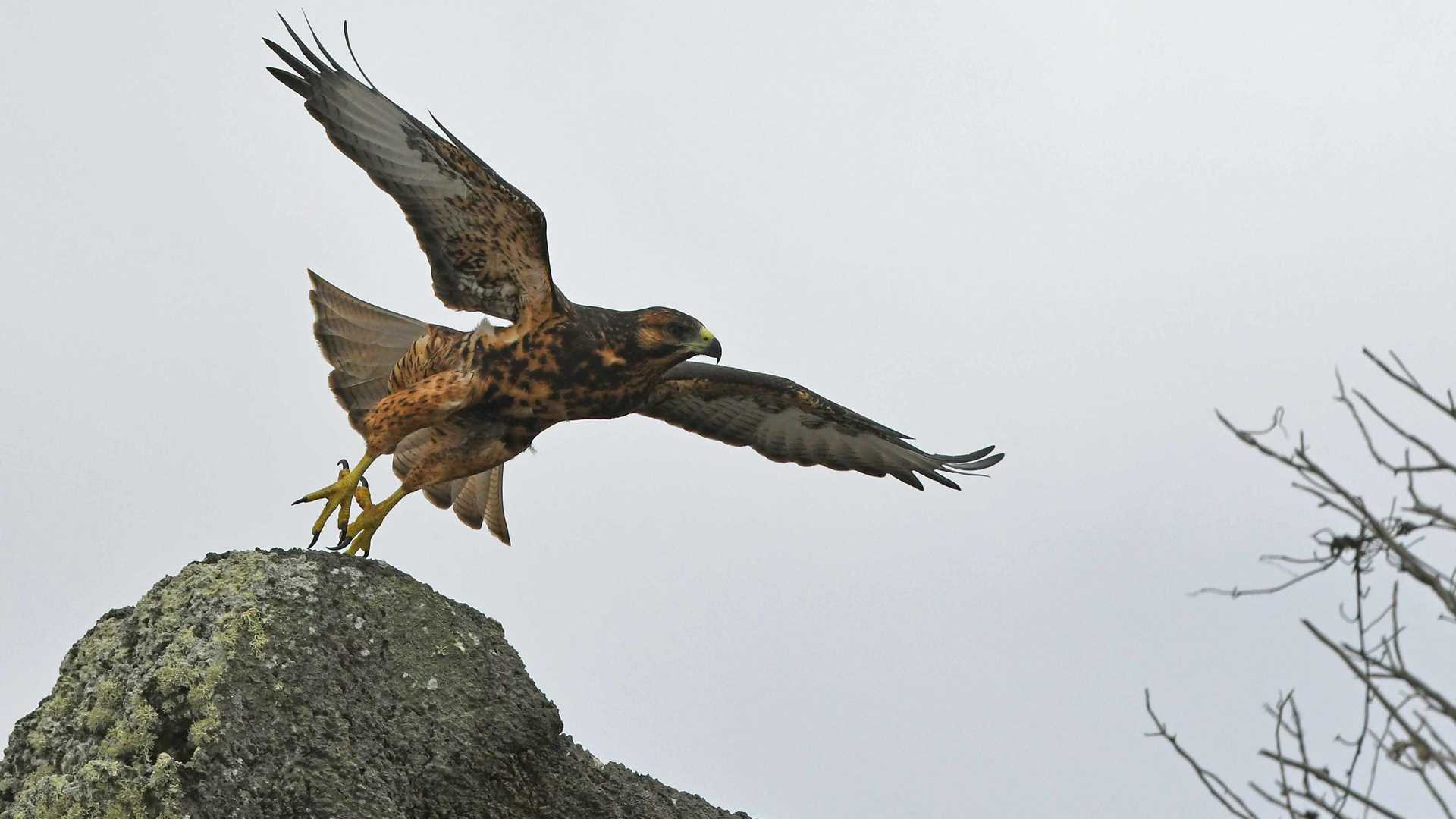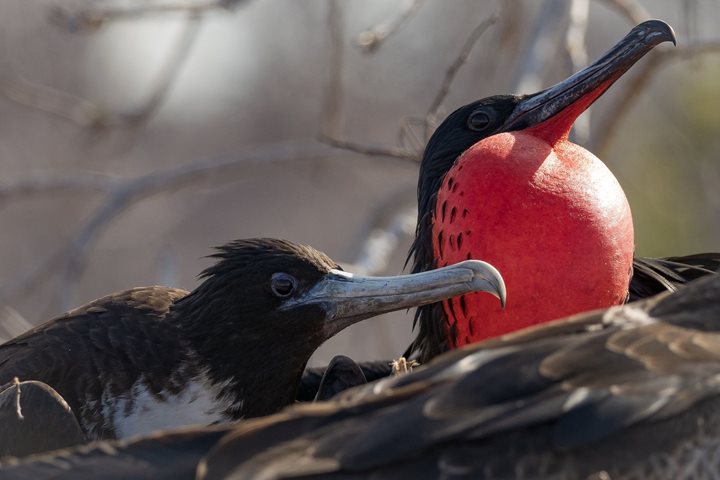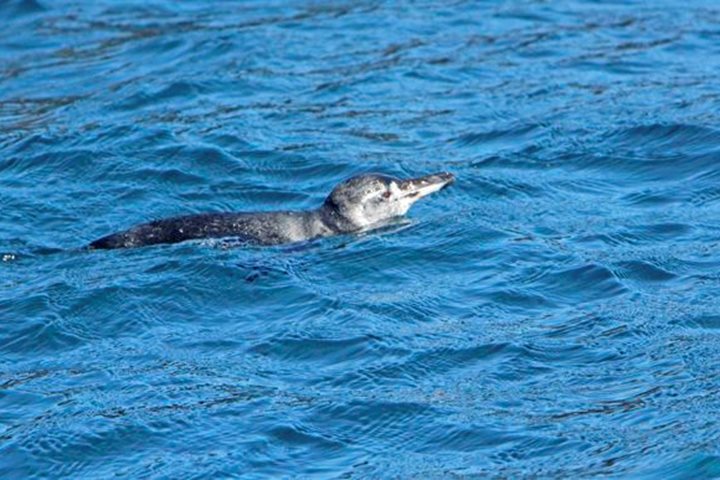Today, with nice and chilly morning weather, we awoke off the northern central coast of Española. The crystal aquamarine waters of Gardner Bay surrounded us. Some our guests joined me in exploring the coast of Gardner bay on kayak. It was a great beginning, warming up and working out. At 7:30 we had breakfast, after, we had a snorkel briefing and out-fitting session. Once equipped and properly instructed, we went to discover the underwater realm of Gardner Islet. We found an amazing abundance of sea life, including several juvenile Galapagos sea lions that were very playful and friendly with us. We also found large schools of yellow-tailed surgeonfish, grunts, eels, some marine turtles sleeping on the sea bed, sea urchins, sea fans, sea stars, and colorful walls teaming with diverse invertebrates.
Some guests opted to visit the beautiful white sand beach found in the bay. Curious Española mockingbirds made a welcoming committee flitting back and forth. Dozens of Galapagos sea lions were dozing along the coastline. It is great to sit so closely to such a large colony of these incredible creatures, and to see how they interact with each other. After this wonderful morning we enjoyed a traditional Ecuadorian lunch buffet prepared by our talented galley crew.
In the afternoon, our photo instructor gave an interesting talk. After a short navigation and having had some time to rest and recharge our batteries, we arrived at Punta Suarez. This visitors’ site is located in the westernmost point of Española Island. Here, the abundance of wildlife is overwhelming. We were instantly surprised by the profusion of life as we landed. Colorful green and red Española marine iguanas and many Darwin finches were seen. Many young sea lion pups were admired while playing cheerfully in the shallows. Some intrepid walkers moved farther along the inland exploring a rocky trail. High cliffs are home to many seabird species like Nazca boobies, hawks, shearwaters, red-billed tropicbirds and swallow-tailed gulls. Nazca boobies are endemic birds to the Galapagos. The waved albatross is another unique creature that inhabits the Galapagos from April to December to reproduce. We saw them practicing their intricate and well-elaborated courtship, one of the most stunning among seabirds in the world. Many of their babies were ready to get food from their parents, they feed on 5 kilograms of a very nutritious oil that allows them to grow quickly. By December, they will reach adult size and leave the island for five years.
On our way back to home to National Geographic islander, we enjoyed a gorgeous sunset. We could not avoid thinking how fortunate and privileged we were to have had the opportunity to be part of this incredible place. What a remarkable first full day to start a week of adventure and exploration in one of the most famous and pristine places on Earth, the Galapagos Islands.









